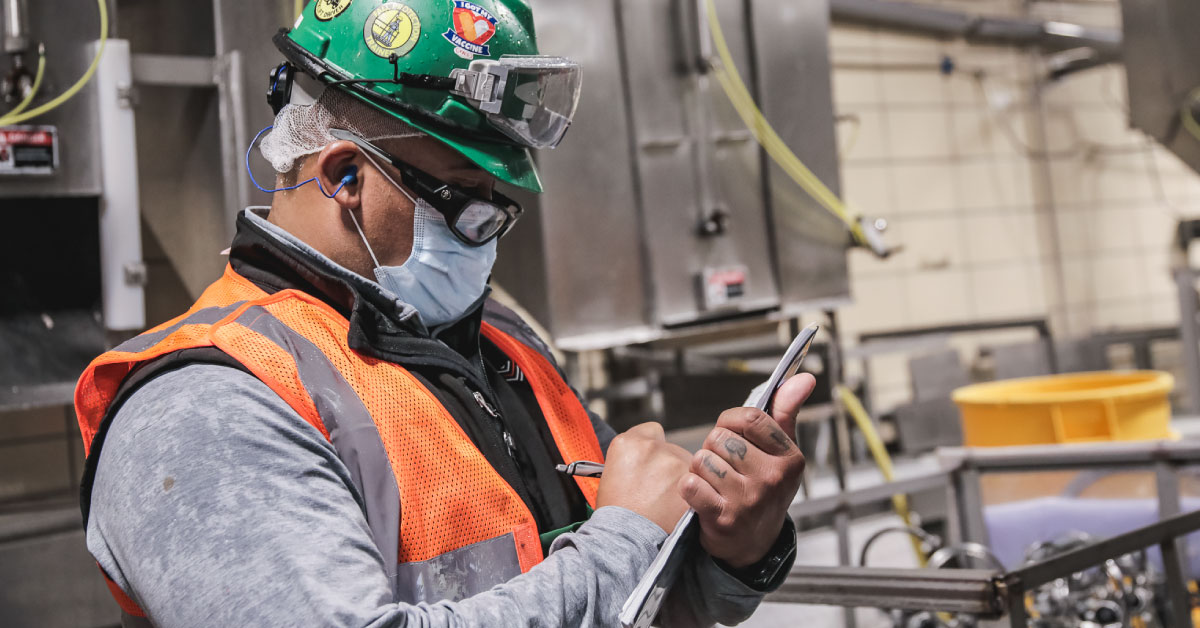In the food sanitation industry, continuous improvement (CI) is essential to ensuring both operational excellence and customer satisfaction. At its core, CI is about enhancing safety, increasing efficiency, and empowering our team members, all while maintaining the highest food safety standards. It’s a cycle of constant refinement that benefits not only the employees doing the work but also the customers we serve.
When we eliminate waste from our processes, we make the work safer. Less waste means fewer opportunities for mistakes and accidents, which in turn reduces the need for rushing—a key contributor to workplace injuries. Safety is always the top priority, and CI helps ensure that by making our operations more efficient, we’re also making them safer for everyone involved.
At the same time, food safety remains non-negotiable. Through CI, we improve how we operate without ever compromising the integrity of the food supply. It’s about working smarter, not harder, ensuring that safety standards are upheld while maximizing efficiency.
A big part of CI is respecting and empowering the people who do the work. Our team members aren’t just here to complete tasks; they’re here to bring ideas and contribute to improving the processes they know best. Everyone’s insights are invaluable in helping us identify opportunities for improvement. By giving employees the tools and trust to make their jobs better, we create a more engaged and innovative workforce. Plants that haven’t embraced this mindset are missing out on a wealth of good ideas from their own team members.
Leadership plays a critical role in fostering this culture of continuous improvement. When management is on the floor, working alongside employees, it sends a powerful message: we’re committed to making your jobs safer, easier, and more efficient. This kind of visible leadership doesn’t just improve operations—it drives employee engagement. When team members see that their leaders are invested in improving their work environment, they feel heard, valued, and supported. The result? Higher job satisfaction, lower turnover, and a stronger, more engaged workforce. CI is one of the most effective employee engagement strategies we can offer. People are excited to work for an organization that’s focused on solving problems and driving improvement.
At the heart of all these efforts is the customer. Every improvement we make is ultimately aimed at delivering better service. When we streamline our processes and eliminate inefficiencies, our customers see the benefits firsthand—less downtime, smoother operations, and improved sanitation practices. As we reduce our costs through efficiency gains, we aim to pass those savings on to our customers. But the most significant value comes from creating a safer, more optimized workforce that can meet customer needs more effectively.
Data is crucial in driving these improvements. We collect and analyze a range of metrics, from food safety performance to labor productivity, to identify where we can make the most impact. This data-driven approach allows us to track our progress, measure the effectiveness of our changes, and ensure that we’re continually moving the needle in the right direction. We also work closely with our customers to develop the KPIs that matter most to them, ensuring that we’re aligned in our goals and accountable for delivering results.
Beyond labor efficiency, continuous improvement also brings additional benefits, like water savings and reduced chemical use. By identifying waste in all forms—whether it’s time, resources, or energy—we’re able to make smarter, more sustainable decisions that benefit both our business and our customers.
Looking ahead, technology will play an increasingly significant role in our CI efforts. Robotics, automation, and advanced tools like UV sanitation robots and drones can augment the work of our team members, making sanitation safer and more precise. These innovations aren’t about replacing people—they’re about enhancing the effectiveness of our workforce, ensuring that we can deliver the highest levels of safety and efficiency while continuing to improve.
Ultimately, continuous improvement is about doing better every day—for our employees, for our customers, and for the safety of the food supply. By embracing a culture of problem-solving and innovation, we create a workplace where people are excited to contribute and a service that consistently delivers more value to our customers.
